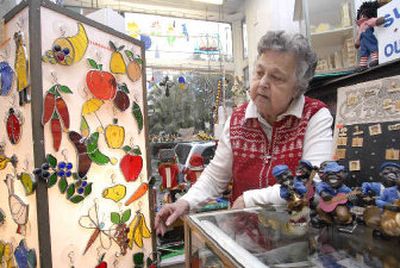It’s a hard sell in the Big Easy

NEW ORLEANS — It’s nothing for Myra Landry to go a day or more without making a sale at her French Quarter collectibles shop. What she earned in a day before Hurricane Katrina, she’s often lucky to make now in a month.
Landry, who sells knickknacks and miniature collectibles ranging in price from 50 cents to $5,000, says she hasn’t drawn a salary since the storm hit Aug. 29, 2005 — drying up much of the leisure and tourist trade — and has relied on loans and savings to stay in business.
Across New Orleans, where some storefronts remain boarded up and the general pace of the recovery remains sluggish, Landry’s story is a familiar one. Shop owners say they’ve cut hours in response to a reduced customer base. Some have closed or are considering closing. Those that remain say they need more customers and action by government and trade groups to avert a crisis.
State and local tourism officials acknowledge the city’s tourism-reliant economy is struggling, but say they’re taking steps to help. Among them:
“A $100 million, federally funded grant program for small businesses in hurricane-hit communities along the Louisiana Gulf Coast.
“Marketing New Orleans with the message that the Big Easy is open for business, especially the tourist attractions.
Some business owners laud the effort, but say it falls short.
What the region needs, they say, is a well-financed marketing campaign and a flag-bearer to deliver the message, such as Mayor Ray Nagin or Gov. Kathleen Blanco.
“2007 right now looks like it’s going to be a struggle,” said Ralph Brennan, whose family owns some of New Orleans best-known restaurants. “I don’t see much difference between 2007 and 2006 yet.”
Government and tourism officials focused on recovery of infrastructure in 2006, but also on public perception damage control. The University of New Orleans estimates tourism contributes about $4.9 billion annually to the not-very-diverse local economy. So the race was on to keep conventions and travelers coming.
One high-priority target was $185 million renovation of the storm-damaged Louisiana Superdome. With $115 million of federal money kicked in, the stadium reopened to national fanfare September, giving tourism officials a burst of optimism.
But overall, the results were mixed. Only about 40 percent of the convention business booked for 2006 actually took place. And even big weekends or once-reliable events, such as Mardi Gras, Jazz Fest and the Christmas-New Year holidays, failed to live up to hopes.
Roughly one-third of the city’s estimated 9,600 businesses of all kinds have closed since Katrina, according to estimates in a state-commissioned study. More are struggling.
Mark Wilson, president of the French Quarter Business Association, says at least half the more than 450 businesses in the Quarter are in that category — many are antiques or high-end specialty retailers such as Landry.
“If the state, which is sitting on so much money right now, could find more to give the city of New Orleans to market tourism, it would have a drastic effect — and immediate effect — on business and the French Quarter,” Wilson said.
The Louisiana Recovery Authority, which oversees distribution of federal relief dollars, has allocated $20 million to market the city. Tourism officials, who say that extra money won’t stretch far, have promised an aggressive new marketing campaign, with cable TV and magazine ads, but, so far, have provided few other details. A recent campaign featured celebrities with ties to New Orleans urging people to “come fall in love with the New Orleans all over again.”
LRA also has approved a $100 million, first-come, first-serve grant program for hurricane-affected businesses. The program is tied up in red tape, needing approval of the Legislature and federal officials, but would provide eligible small businesses with grants of up to $20,000. The goal is to help as many as 7,000 businesses with fewer than 50 employees, said Robin Keegan, LRA’s director of economic and workforce policy.